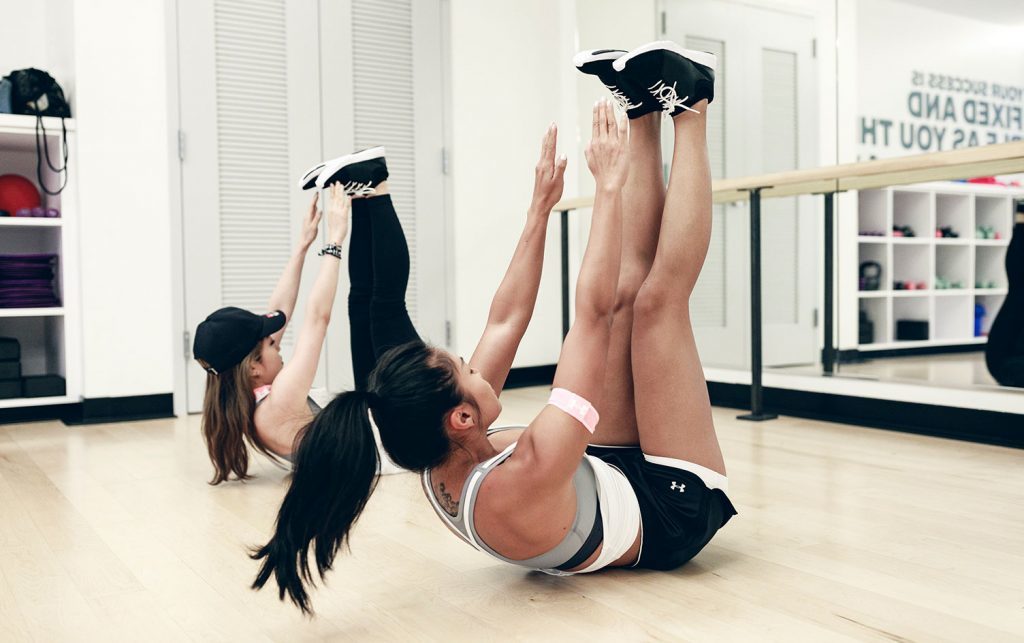
Visible abs are seemingly the cornerstone of an impressive body — or that’s what the fitness media would have you think, anyway. Many people list “see my abs” as one of their primary goals when they start a new exercise program. But do you need to be able to see your abs to be healthy? To be strong? To be good at your sport?
None of these questions have simple answers. One thing is clear, however: six-pack abs are hard to get. It takes a ton of work to achieve the combination of low body fat and muscle definition necessary to sport a six-pack. So before you embark on your quest for those abs, ask yourself: Are they worth the hype?
First, let’s talk about how to actually get six-pack abs.
WHAT IT TAKES
Your ability to get a six-pack hinges on three main factors:
- Low body-fat percentage
- Hypertrophy (i.e. increased muscle size) of the abdominal muscles
- Genetics
Everyone is different. We’re all a product of nature (genetics) and nurture (how we approach nutrition and exercise). Some people naturally carry more fat tissue around their midsection, while others seem to stay ripped no matter what.
Most people focus on how their abs look, when in reality, they should focus on how they work.
Research consistently shows a caloric deficit (eating fewer calories than you burn) is necessary to lose fat, but can you specifically target the fat around your belly to reveal your abs faster? This concept, called spot reduction, is fuel for much debate.
THE SKINNY ON SPOT REDUCTION
What’s the first thing most people do when they want a six-pack? They target their abs with tons of core exercises like planks and crunches. This makes sense in theory, but will this approach actually melt fat off your midsection?
The argument over spot reduction (the idea you can lose fat from a specific area of your body by working it out) has raged for years. The consensus is shifting toward spot reduction being a myth even though research has been around for decades suggesting that spot reduction works. A 1965 study was one of the first to show that direct ab exercises could lead to reduced belly fat. The problem with studies like this? They don’t differentiate between ab exercise or just exercise in general, so one may conclude that any type of exercise can help lose belly fat as long as it puts you in a caloric deficit.
Perhaps the strongest argument against spot reduction is a 2015 study that looked at fat loss among overweight subjects who either dieted and performed ab exercise or dieted with no ab exercises. Both groups lost the same amount of fat, suggesting nutrition is the greatest weapon in the fight to see your abs.
READ MORE > ASK THE DIETITIAN: IS COUNTING CALORIES OR WORKING OUT BETTER FOR WEIGHT LOSS?
WHAT’S THE BEST APPROACH?
Eating fewer calories than you burn helps you lose fat all over your body (including your midsection), while performing ab exercises can increase the tone of those muscles, which makes them more visible if you have a low body-fat percentage. But anyone who’s embarked on a weight-loss journey can tell you losing 10 pounds can be a challenge, let alone getting to a low enough body-fat percentage to have a six-pack.
So how do fitness models do it? Some have spectacular genetics — and it’s a safe bet that most of them work extremely hard and follow unrealistically strict nutrition protocols to get ready for a photo shoot or physique contest. In fact, most models only stay that lean for only a short amount of time. That’s no knock on them, but rather a wake-up call to us who assume these models spend their entire lives with single-digit body fat.
MORE THAN JUST FOR LOOKS
Most people focus on how their abs look, when in reality, they should focus on how they work. Strong abs help move and protect the spine, torso and hips, leading to a healthier life and better performance in whatever exercise activities you choose.
Here’s a quick rundown of what your ab muscles actually do.
Inline card:
- Rectus Abdominus
- Transverse Abdominus
- Obliques
RECTUS ABDOMINUS
Your rectus abdominus is what you think of when you think ‘six-pack.’ Its main function is to flex the spine (like when you do a crunch), but it’s also important for putting your pelvis and lower back in a “neutral” position during exercises that load your spine, such as squats and deadlifts.
Move to Try: Reverse Crunch
TRANSVERSE ABDOMINUS
The transverse abdominus sits deep underneath the rest of your ab muscles. It’s the muscle you use to “suck in” your belly, but more important, it creates intra-abdominal pressure to protect your spine during heavy exercises.
Moves to Try: Front Plank variations
OBLIQUES
Your oblique muscles are your “side abs” that help you twist and bend side-to-side. They also prevent twisting of your lower back when you move your hips and shoulders, such as when you throw a ball or swing a golf club.
There are many ways to train your obliques, but two of our favorites are side planks and medicine ball throws. Side planks train the obliques to prevent motion of the torso, while med ball throws use the obliques to create torso motion.
Moves to Try: Short Side Plank with Hip Internal Rotation and Medicine Ball Throws
CONCLUSION
So, are abs actually worth the hype?
Only you can answer that question for yourself. If the satisfaction of doing the work to get a six-pack makes you happy, go for it. But know it’s entirely possible to be healthy and have a positive self image without visible abs.
The post Are Abs Worth the Hype? appeared first on Under Armour.
(via MyFitnessPal Blog)
